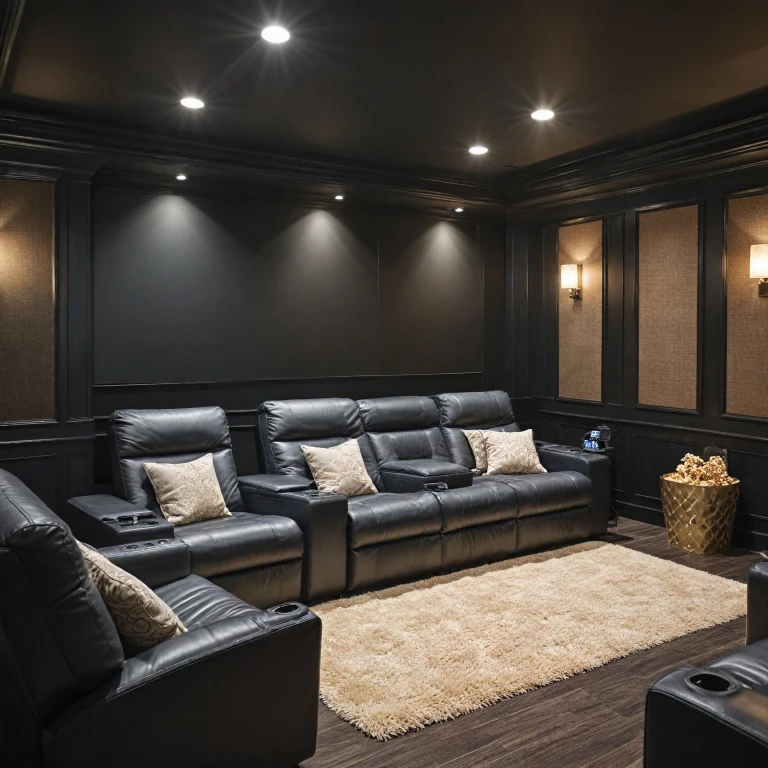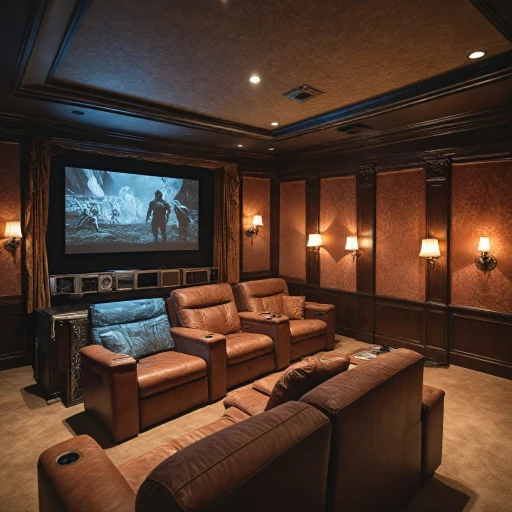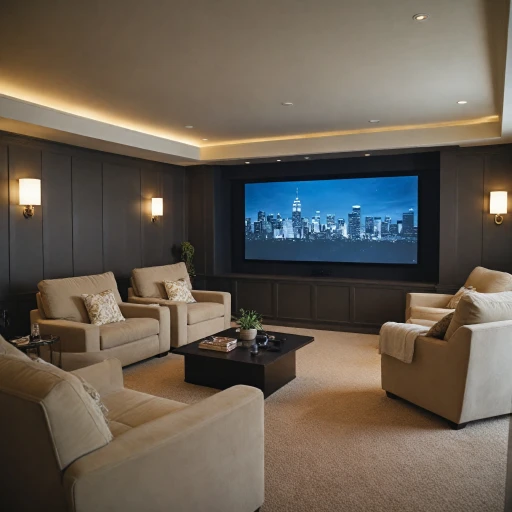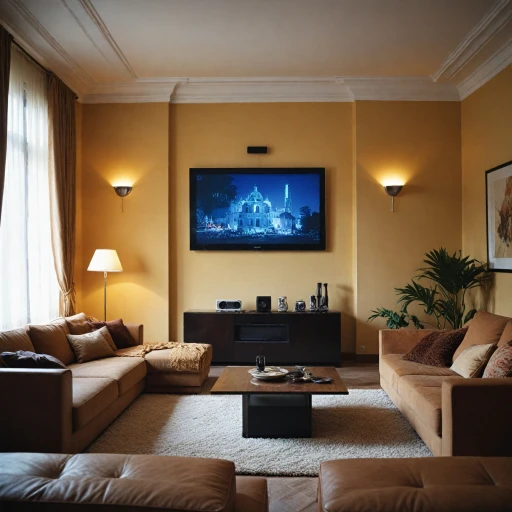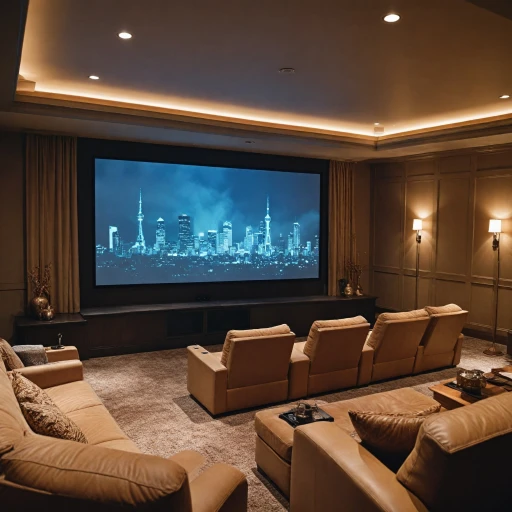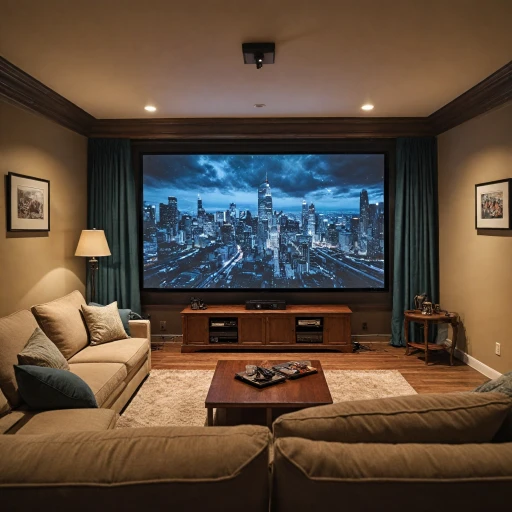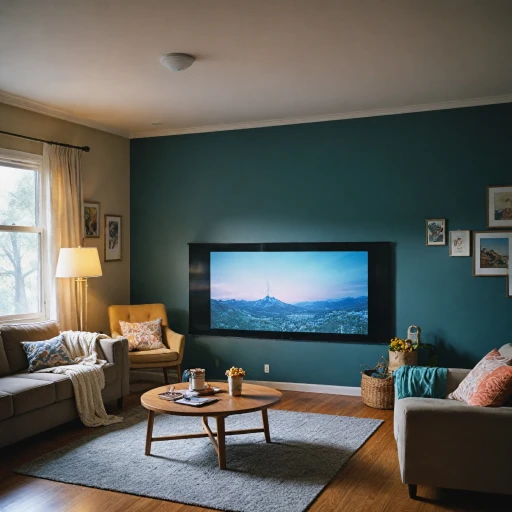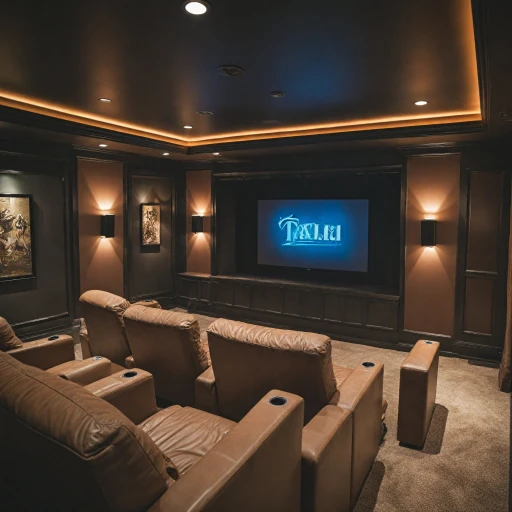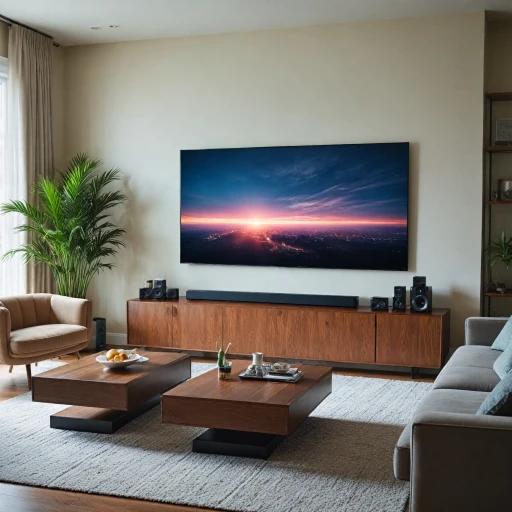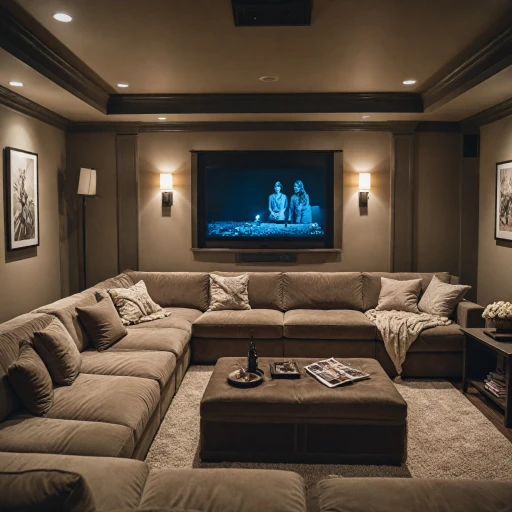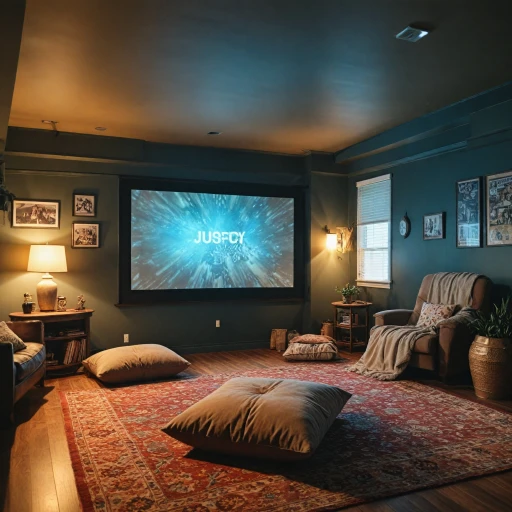
Understanding Pull-Down Cinema Screens
A Closer Look at the Pull-Down Cinema Screen
When considering upgrading your home theater experience, the pull-down cinema screen emerges as a pivotal choice. Ideal for both image quality and flexibility, this type of projection screen does wonders for your movie nights. Pull-down screens are popular for their versatility and ease of use. Unlike fixed frames that require a dedicated space, these screens can be tucked away when not in use, making them a great option if you need a flexible setup. They are available in various sizes, designed to suit different room dimensions and projector capacities. Whether you're relying on a portable projector or a more permanent setup, this screen can cater to your needs. Shopping for a pull-down screen can vary according to price and product specifications. From elite screens marked by their high-quality and durability to more cost-effective versions, there is an option out there for every budget range. Screens like the manual pull series are known for their simplicity and reliability, though they may require a little bit more manual effort compared to automatic models. Choosing the right aspect ratio and viewing angle is vital in providing an immersive viewing experience. Manufacturers offer a variety of materials that help to maintain optimal picture quality amidst varying levels of ambient light. As these products vary broadly, customer reviews often prove useful in discerning the best match for your needs. For those considering future outdoor viewings or alternate setups, it's beneficial to explore options that integrate well with existing or planned installations. To further understand the best choices for an outdoor movie setup, you might find it useful to check out more information on choosing the perfect outdoor movie screen for your home theater experience.Benefits of Using a Pull-Down Cinema Screen
Advantages of a Pull-Down Cinema Screen
When it comes to upgrading your home theater setup, a pull-down cinema screen offers a multitude of benefits. These screens are designed to maximize your viewing pleasure, transforming your space into a cinema-like environment. Here's why a pull-down screen might be the right choice for your home theater projector setup. One of the standout features of a pull-down cinema screen is its versatility. Unlike fixed screens, which require a permanent installation, pull-down screens can be easily retracted when not in use. This makes them a great option for multi-purpose rooms where you may not want a screen permanently on display. Additionally, they can work well in spaces where installing a fixed frame is impractical. Another advantage is affordability. Pull-down projector screens come at varying price points, making it easier to find something that fits your budget. Many highly reviewed models offer great quality without breaking the bank. Customers often praise these screens for their combination of performance and price. These screens are also known for their easy installation process. With manual pull mechanisms, you don’t need to worry about complex electronic setups. A simple tug and your screen is ready for movie time. Plus, their portable nature means that if you decide to relocate, your screen can move with you, offering flexibility that other screen types might not. In addition to functionality and cost, pull-down screens come in a variety of materials that enhance image quality. Matte white screens, for instance, are excellent for creating consistent brightness across the entire screen, irrespective of ambient light conditions. This can be particularly beneficial if your setup involves a short throw or ultra short throw projector, which can be sensitive to light conditions. It’s also worth noting the wide selection of aspect ratios available with pull-down screens. Whether you're watching the latest blockbuster or a classic film, you can choose an aspect ratio that heightens your viewing experience. Overall, pull-down projector screens offer an ideal balance of simplicity, flexibility, and performance. They're a great addition to any home theater system, ensuring a superb viewing experience every time. If you're contemplating which projection screen suits your needs, you might want to consider how a pull-down screen can elevate your home entertainment setup. Learn more about enhancing your viewing experience with a pull-down projector screen.Choosing the Right Screen Material
Choosing the Perfect Screen Material for Your Entertainment Space
When it comes to enhancing your home theater experience, selecting the right screen material is critical. The choice of material affects not only image quality but also how light and color are projected in your viewing area. Let's explore some factors and options to consider while deciding on the screen material for your pull-down theater setup.
First, think about the ambient light in your room. If you are setting up a home theater in a darkened space, a matte white screen could be a great option, as it provides excellent color accuracy and a wide viewing angle. On the other hand, if you're dealing with brighter conditions or more ambient light, a gray screen with enhanced contrast capabilities might be more suitable.
Next, consider the aspect ratio of your projection. Modern projectors offer different aspect ratios, and choosing a screen that matches is essential for an optimal viewing experience. Partners like Elite Screens offer products that cater to a variety of aspect ratios, ensuring compatibility with different projectors—whether they are ultra short throw or traditional setups.
Portability is another factor. If flexibility is a priority, such as using your system in different rooms, consider a manual pull-down screen that’s easy to install and take down. Fixed-frame options could be ideal for a dedicated movie room where stability and screen tension are essential.
Finally, take into account the price. Manual series screens offer budget-friendly options without compromising too much on image quality. Customer reviews often praise the balance of cost and quality, highlighting them as a strong contender against more expensive, fixed-frame alternatives.
Do your research by reading stars reviews for various products and review sites often provide insights into performance aspects such as color accuracy, viewing angle, and durability. Consider visiting Enhancing Your Audio Experience: Choosing the Right Subwoofers for Sound Bars for more tips on enhancing the overall sound and visual setup of your home theater system.
Installation Tips for Pull-Down Cinema Screens
Strategic Placement and Setup Tips
Installing your pull-down cinema screen correctly is essential to achieving a great home theater experience. Start by selecting an appropriate wall or ceiling location that allows for an ideal viewing angle and takes into account the screen's aspect ratio. Consider the seating arrangement in your room to ensure everyone has a clear view of the projection. For optimal picture quality, make sure the area can be darkened effectively to minimize ambient light interference on the screen.
Tools and Installation Process
Gather the necessary tools before beginning the installation. At the minimum, you'll need a drill, screwdriver, level, and measuring tape. If you're opting for a ceiling mount, additional anchors may be required for extra stability. Follow the product's manual for a step-by-step guide, as each screen may have unique installation instructions.
Adjusting and Fine-Tuning
Once installed, test the screen by pulling it down to its full extent. Ensure that it unrolls smoothly without any creases. If the screen has a black border or matte white surface, check that the projector is aligned perfectly for a sharp image. Depending on the model, some screens offer a manual pull or automatic retraction feature—either should work seamlessly for frequent use. Customer reviews often highlight the importance of this feature for long-term reliability.
Final Assessment and Projection Testing
Finally, connect your projector and test the setup with a short throw or ultra short projector to evaluate the quality of the projected image. Adjust the screen tension if necessary to eliminate ripples and ensure a flat viewing surface. Your goal is to have a stable, high-quality viewing experience that complements your audio setup. If needed, consult reviews for additional insights on optimizing movable screens or consider a fixed frame setup for minimal adjustments.
Maintaining Your Pull-Down Cinema Screen
Regular Cleaning for Optimal Performance
Maintaining your pull-down cinema screen is crucial for ensuring a great viewing experience. Regular cleaning helps preserve the quality of the screen and prolongs its lifespan. Dust and dirt can accumulate over time, affecting the clarity of the projection. Use a soft, dry cloth to gently wipe the screen surface. For more stubborn stains, a slightly damp cloth with mild soap can be used, but ensure the screen is completely dry before rolling it back up.
Proper Handling and Storage
To avoid damage, always handle the screen with care. When pulling down or retracting the screen, do so slowly and evenly to prevent any misalignment or tearing. If your screen is portable, ensure it is stored in a safe, dry place when not in use. Avoid exposing the screen to direct sunlight for extended periods, as this can cause fading and deterioration of the material.
Check for Wear and Tear
Regularly inspect your screen for any signs of wear and tear. Look for any rips, holes, or discoloration that might affect the projection quality. If you notice any issues, consider consulting the product manual or reaching out to the manufacturer for advice on repairs or replacements. Keeping an eye on these details ensures your home theater setup remains in top condition.
Adjusting for Ambient Light
Ambient light can significantly impact the viewing experience. Ensure your screen is positioned to minimize light interference. Consider using blackout curtains or shades to control the light in your theater room. This adjustment can enhance the contrast and brightness of the projected image, providing a more immersive movie experience.
Comparing Pull-Down Screens with Other Screen Types
Comparing to Other Screen Types
Choosing the right projection screen can significantly enhance your home theater experience. Pull-down cinema screens have their unique advantages, but how do they compare with other types? Let’s delve into the differences.- Fixed Frame Screens: These provide a great, professional look, ideal for setups where a permanent screen isn’t a problem. Offering a consistently tight surface, fixed frame screens are excellent for quality image reproduction. However, they lack the flexibility of pull-down screens when it comes to saving space or multi-purpose rooms.
- Manual Pull-Down Screens: They are particularly useful in spaces where flexibility is key. You can easily pull the screen down for movie nights, then retract it when not needed. This manual series option is also generally more affordable, making it a good product for those mindful of price without compromising on quality.
- Portable Projector Screens: These are perfect for mobility and offer great flexibility. Although not ideal for every room setup, portable screens are lightweight and come with screen stands, allowing you to move your viewing experience outdoors or between rooms.
- Ambient Light Rejecting Screens: If your viewing area is prone to light infiltration, screens designed to reject ambient light might be your best choice. They work well with short throw or ultra short throw projectors, offering better picture quality in less-than-ideal lighting conditions.
